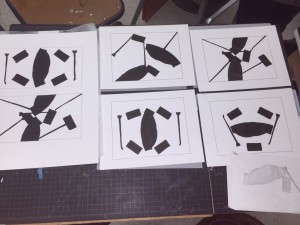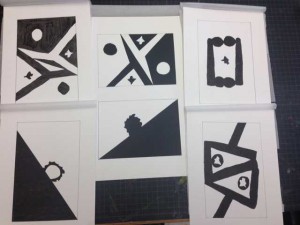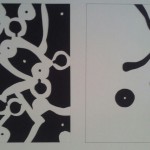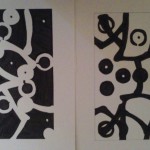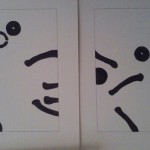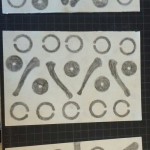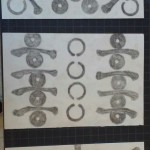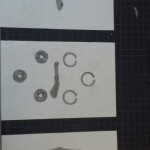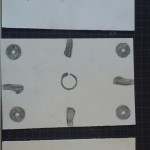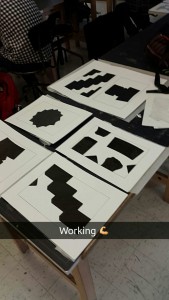Doing this Urban Artifact project, it was something new. I didn’t know what stable or ambiguous was. From this project, I learned about what ambiguous figures and stable figures were and how I can make these two figures using the objects we found outside on the streets. What I could have done better in this project was spending more time in sketching the stable figures. I kind of had a hard time with the stable figure and figuring out if the sketches looked like they were stable. But from critiquing, I got a lot of helpful feedback on my project on how I can make it better. From what I learned about ambiguous and stable figures, I would be able to use those techniques and ideas in the next project we have.
City Limits Summary
“City Limits” is the first chapter in Colson Whitehead’s novel “The Colossus of New York”. Throughout the chapter, the author uses point of views such as first and second person to show the different perspectives of city life in New York. From a first person point of view, the author gives the experiences he encountered while being in New York. His “New York” started when he was looking out the window of the No.1 train as the train elevated from the underground tunnel to the tracks above 125th street. From a second person point of view, Whitehead gives many scenarios to a person’s life in New York City. With examples such as “Maybe you came here for school”,”Maybe you saw the brochure”, “Or maybe you moved here a couple years ago for a job”. Through each individual’s recollection of memories and experiences it’s their “New York”. Although we all live in the same city, Whitehead implies that ” The New York City you live in is not my New York City: how could it be?”. New York City is always changing with adding new accommodations to replace the old ones which someone may have experienced. Whitehead mentions that ” The disappeared pizza parlor is still here because you are here, and when the beauty parlor replaces the travel agency, the gentleman will still have his vacation. And that lady will have her manicure”. That individual’s New York has been changed but they still have the memory of that old piece of New York they lived through. While that person’s New York experienced may have been changed it might be a new experience for someone else. Whitehead’s idea of a New Yorker is someone who has an attachment to the memory they had while being in the city. New Yorkers unite by their unique experiences whether that other person may or may not have experienced it themselves.
Hokum
noun
- : foolish or untrue words or ideas.
- : writing, music, etc., that is too dramatic or sentimental and not very original.
Source:http://www.merriam-webster.com/dictionary/hokum
I’ve come across this word in the reading excerpt “City Limits”. This word can be found in the sentence “That Canal Street used to be a canal. That Bryant Park used to be a reservoir. It’s all hokum”. The following sentence says “I’ve been to Canal Street before and the only time I ever saw a river flow through it was during the last water-main explosion”. In this context the word hokum means untrue words or ideas. From learning what hokum means, I understand that statements about Canal Street and Bryant Park are untrue. The author, Colson Whitehead, mentioned before that “History books and public television documentaries are always trying to tell you all sorts of “facts” about New York”. Whitehead mentions later on in the text “Never listen to what people tell you about old New York, because if you didn’t witness it, it is not a part of your New York and might as well be Jersey”.
Urban Artifact: Phase 4
From this project, I have learned two different figure, stable and ambiguous figure-grand. My favorite part of this project is using the exacto knife to cut off the shape I want, although my desk was scratched, but its still a very nice experience. From the beginning to the end of the project, I have changed many details on my creations from phase to phase, I thought I could make them better. Indeed, I did make them better but I lost the concept of the words. I thought if I make the image simple enough and clear, it will be a stable figure, but stable figure have an imbalance of figure and ground (70/30), wherein the ground “supports” or surrounds the figure. This is what I have done wrong. And I hope in the next project I can clearly understand and memorize this little details.
City Limits Summary
According to the Barnes & Noble overview, “Colson Whitehead is a award-winning novelist who re-creates the exuberance, the chaos, the promise, and the heartbreak of New York.” “City Limits” is the first chapter from the novel, “The Colossus of New York”. The author grabs the readers attention to the novel, where he uses the first and second person. The author makes the reader feel as if you are in New York where he was born. Though out the chapter, Colson explains in detail how he live in New York, from his first city moment when he used the No. 1 uptown train. The city of New York made him who he is now, supported his life and career. Because of this experience, he now sees New York more than ever. As if he sees something different than our view about this city. Which it intrigues me in a way that I want to see what he sees about this city.
Urban Artifacts Phase #4
At the beginning of this project I was unsure of what to expect. I thought to myself why would we be picking up objects from the streets? what can we possibly do with this stuff? I ended up learning a lot of stuff. The meaning of ambiguous and stable. I already had an idea of negative and positive space but i leaned more in depth the importance of both. I also learned that I was really bad at creating ambiguous drawings. What I could have done better was creating my sketches with a lot more thought than just placing them on a paper. and tracing them. In my next project I want to do everything with a meaning and a lot more of my own touch to it. With the critiques I never really applied them to my work because I thought thought it would be too late to make them such as making the boarder darker or even going back to my sketches and making them less symmetrical.
Reminisce
Verb
– to talk, think, or write about things that happened in the past
(Source: Merriam-Webster Dictionary)
I found this word on page 9 of “City Limits”, in the context “We see ourselves in this city every day when we walk down the sidewalk and catch our reflections in store windows, seek ourselves in this city each time we reminisce about what was there 5, 10, 40 years ago, because all our old places are proof that we were here.” The author means to express the idea of nostalgia, or reflection about the past. He describes the memories he indulges in “reminiscence” with. The author even gives examples of how long in the past one might reflect on as well (5,10,40 years ago), and uses the word in context of that example.
Urban Artifacts: Phase 4
Overall, the “Urban Artifacts” project was a very creative and interesting experience overall. It was certainly different than anything i’ve ever done before, and it was a productive learning process as well. However, If i could’ve done something different, I would’ve spent more time on the drafting and sketching, as I could’ve probably came up with a more creative and interesting final product. I do feel that my ideas were clearly expressed in my product, but not in the best way possible. I also would’ve liked to experiment more with the objects collected, as the ones I chose finally were a little more challenging to work with, in terms of expressing emotion through the final piece. However, I can still say I now have a full understanding of the terms we learned through the process. I know the difference between ambiguous and stable, what they mean and represent, and how things like economy and unity can alter and reinforce the ideas and meanings behind pieces that use these kinds of elements. I took into thought the feedback i got from my peers, and I believe I could use more practice in using these elements in my work, as I need to reinforce what my work is trying to express, and what ideas I integrate into them. Below is my final work.
City Limits Summary
“City Limits” is the first chapter of “The Colossus of New York” by Colson Whitehead. According to the beginning pages one and two, Whitehead wrote in a psychological way to capture the reader’s attention. He used 2nd person for the second and the third paragraph which are on the first and second pages of “City Limits”. He wrote: ” No matter how long you have been here, you are a New Yorker the first time you say… you are a New Yorker when what was there before is more real… you start building your private New York the first time you lay eyes on it…”. He used ” you” to make readers feel like they are actually New Yorkers and living in New York, so this way could easier to lead them to imagine the images that going to be happening next. After he brought readers to the New York City in the reading he wrote. He starts to describe and share about where he has been and saw, to let the readers read through his personal experience on the street of the New York.
Filthy
adjective
: very dirty
: very offensive or disgusting and usually about sex
: very evil : morally wrong
Source: Merriam-Webster
I encountered this word from the reading “City Limits” by Colson Whitehead. “It’s the early seventies, so everything is filthy. Which means everything is still filthy, because that is my city and I’m sticking to it.” I never heard this word before. After I find out the definitions I finally understand why. Because mostly I use word dirty, so I never tried to see another way of saying it or in a more specific way to describe something dirty.
